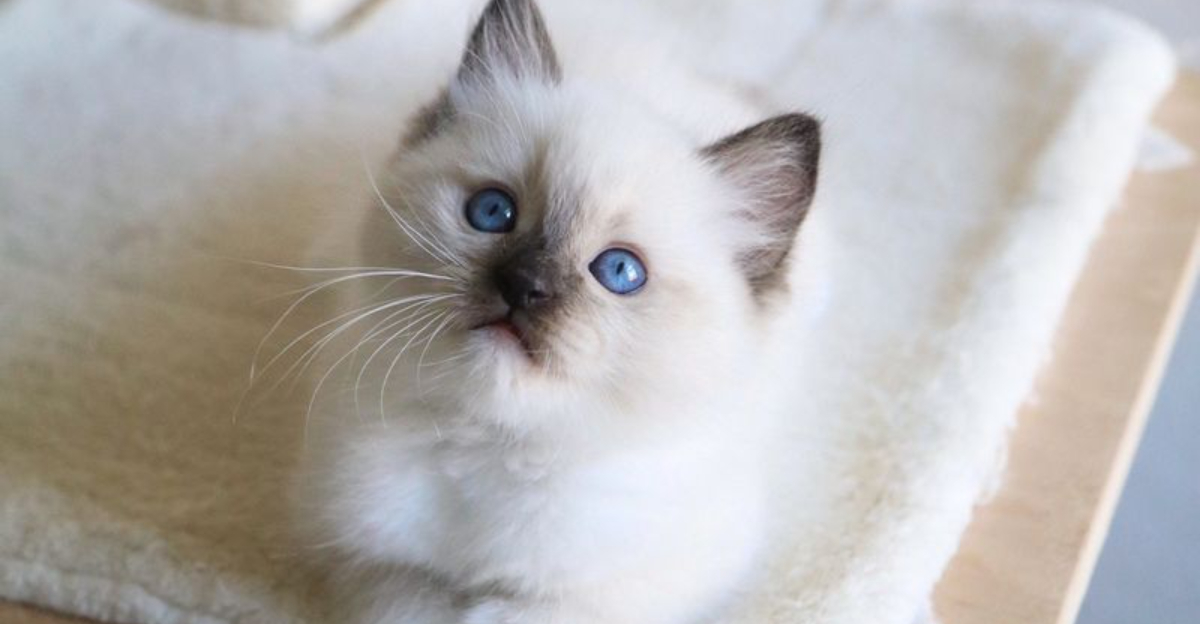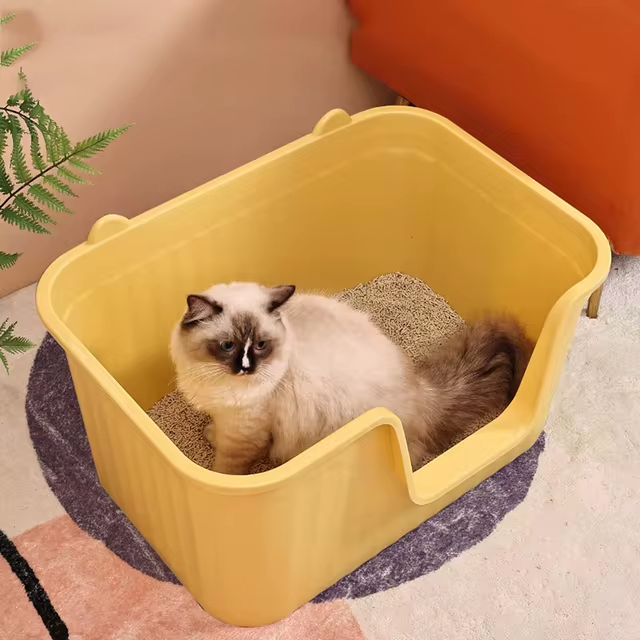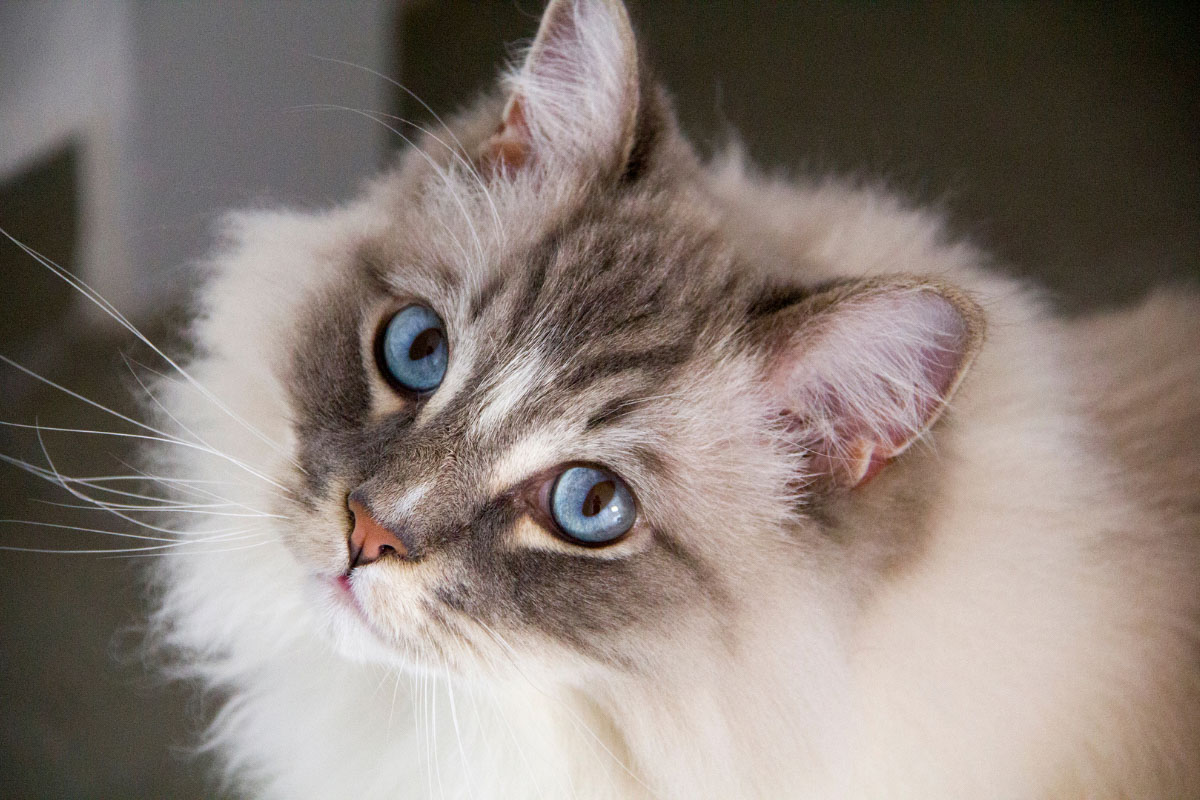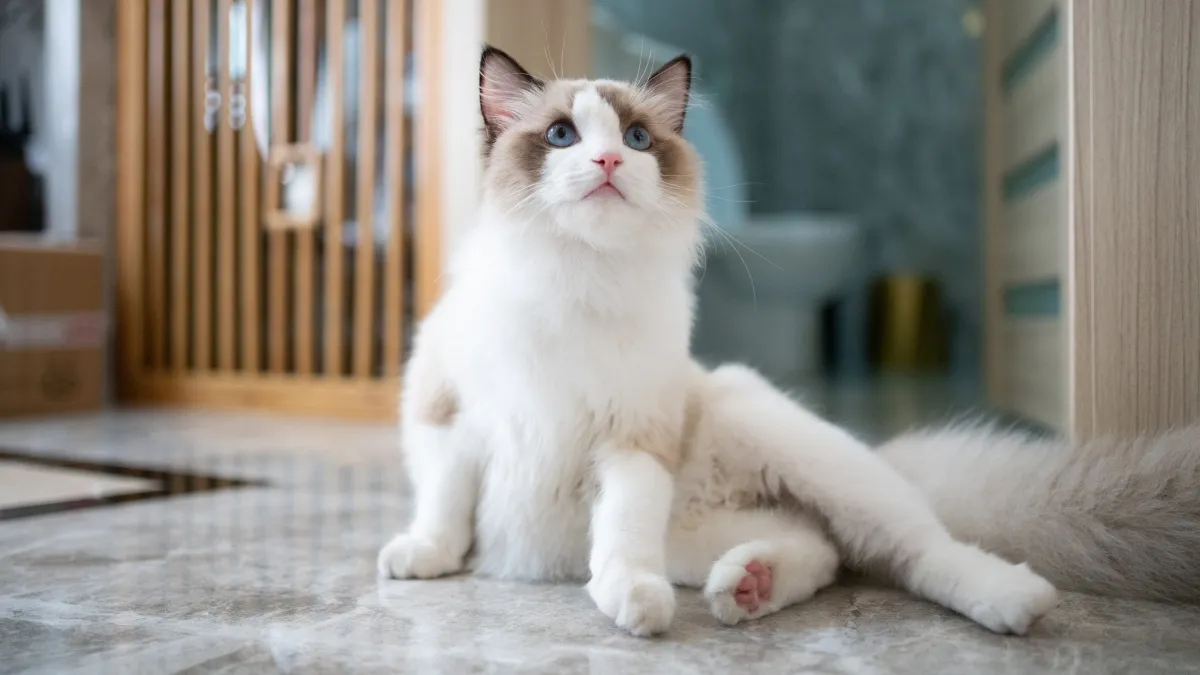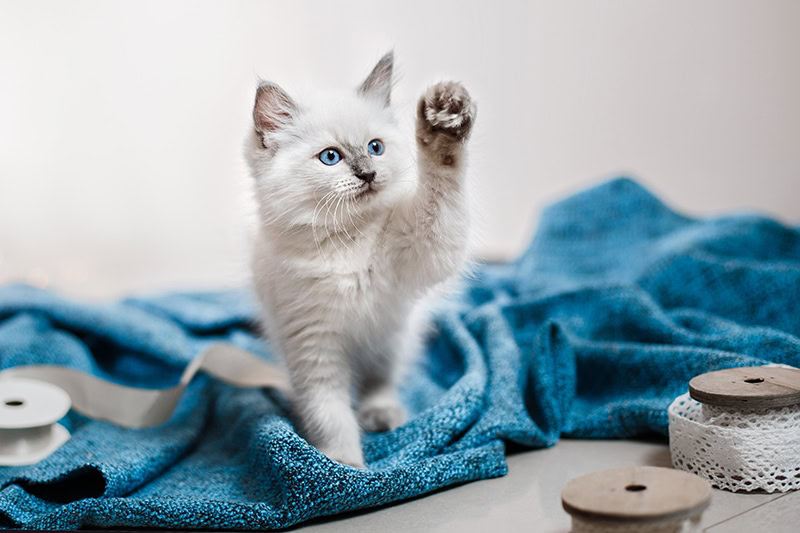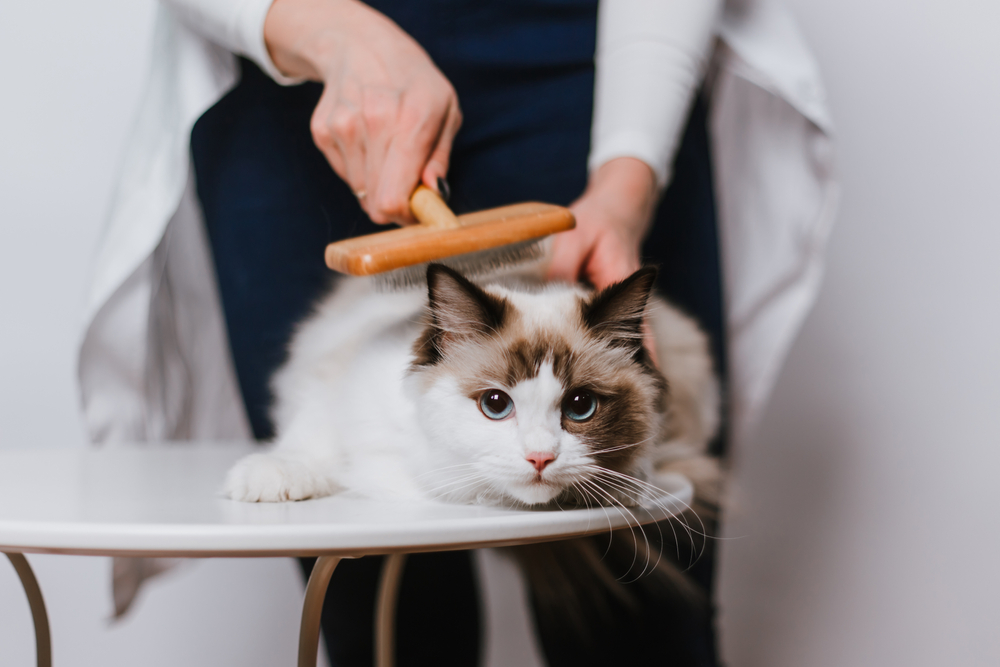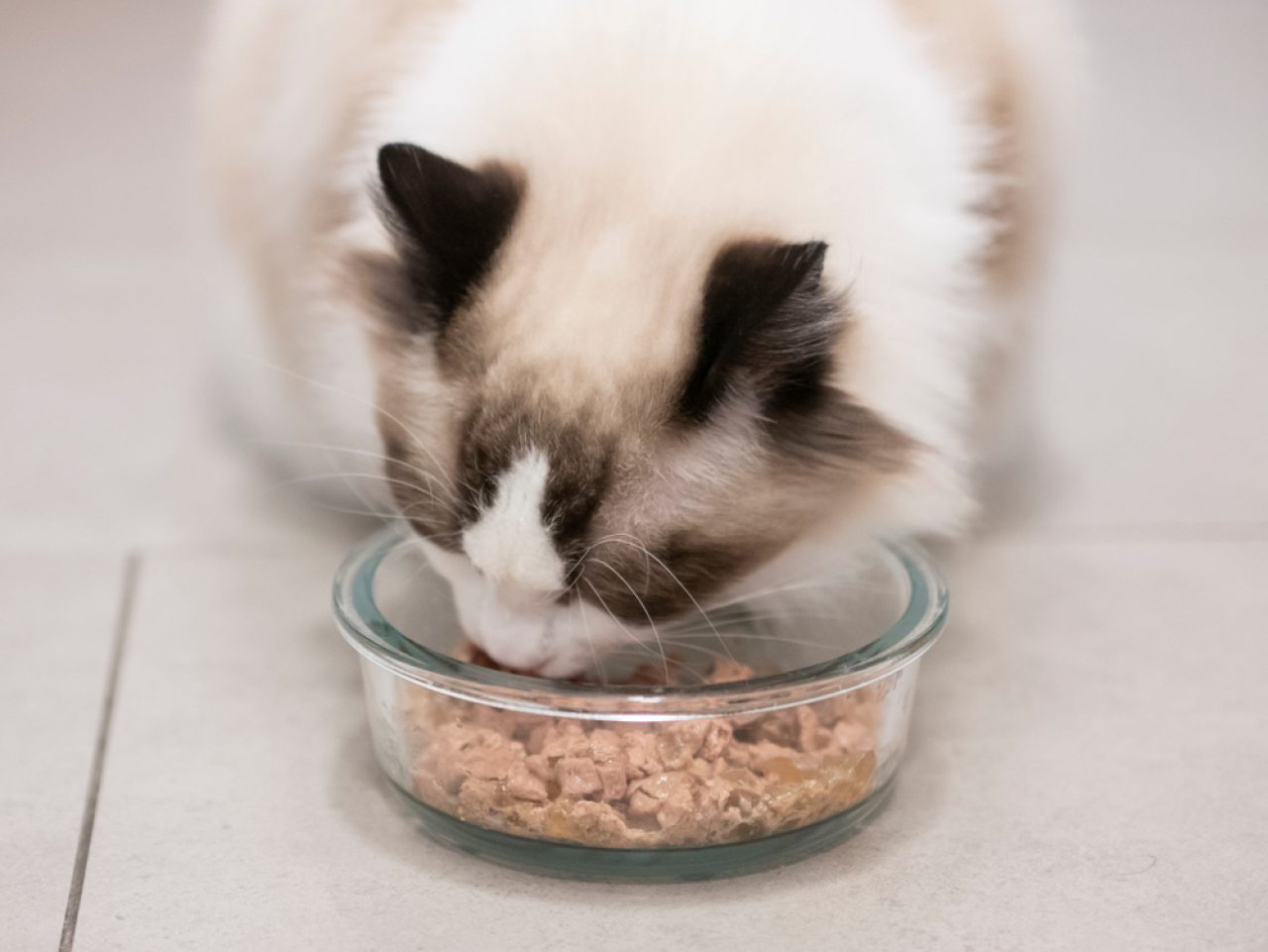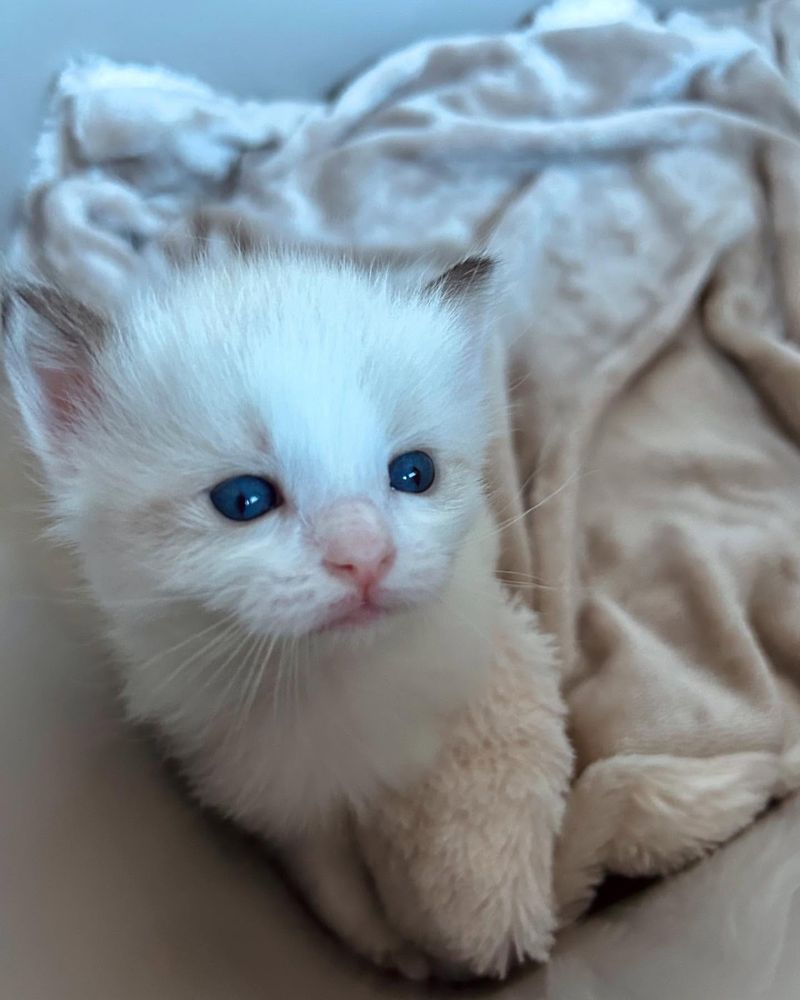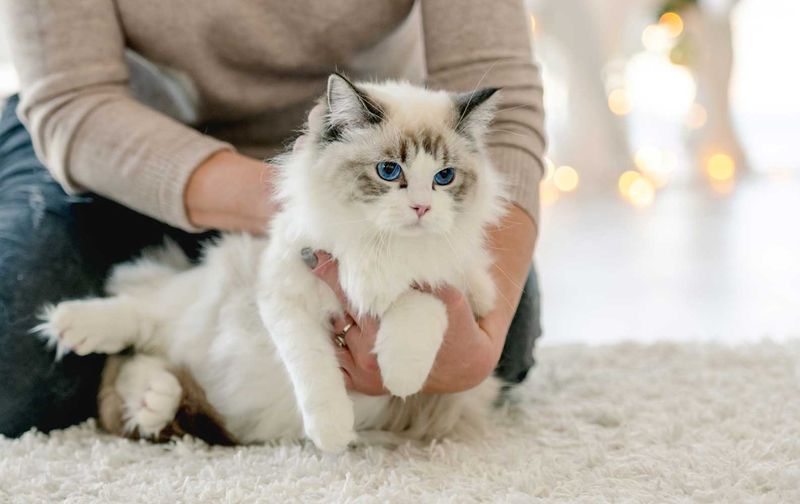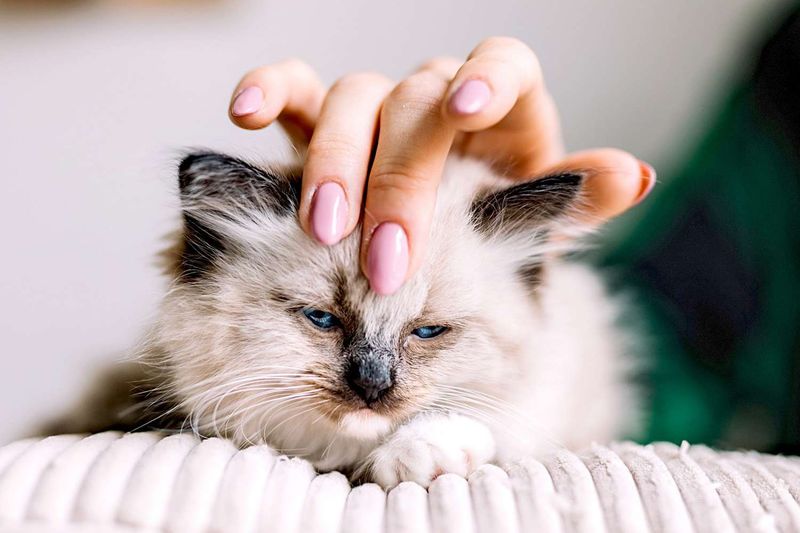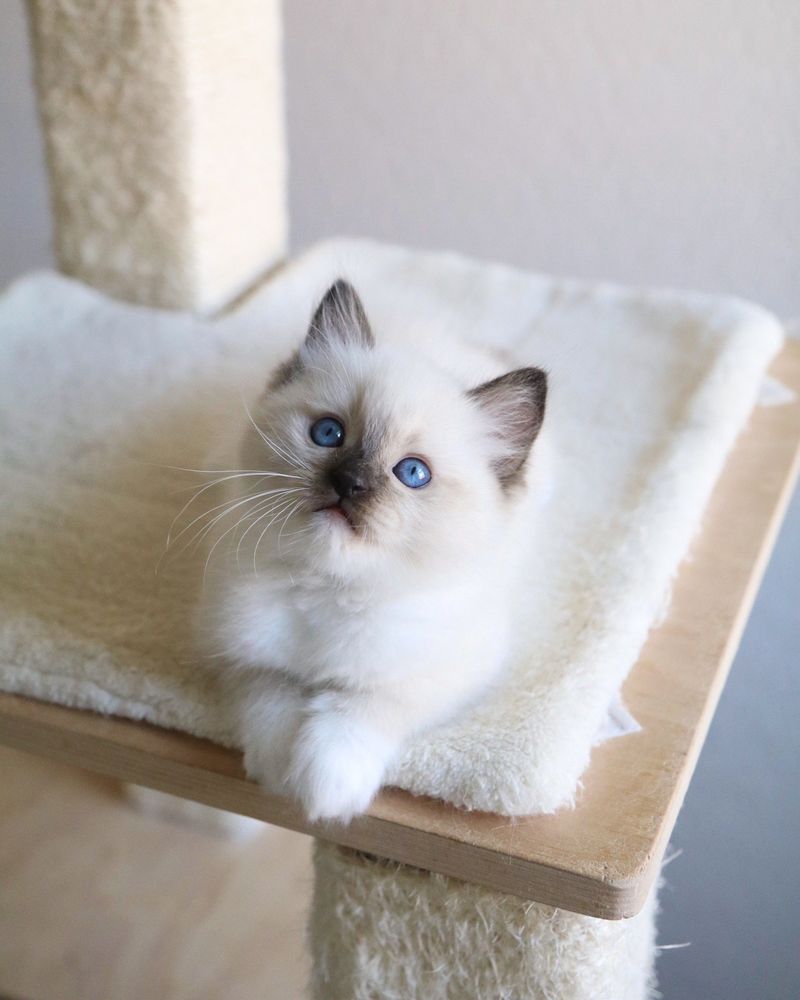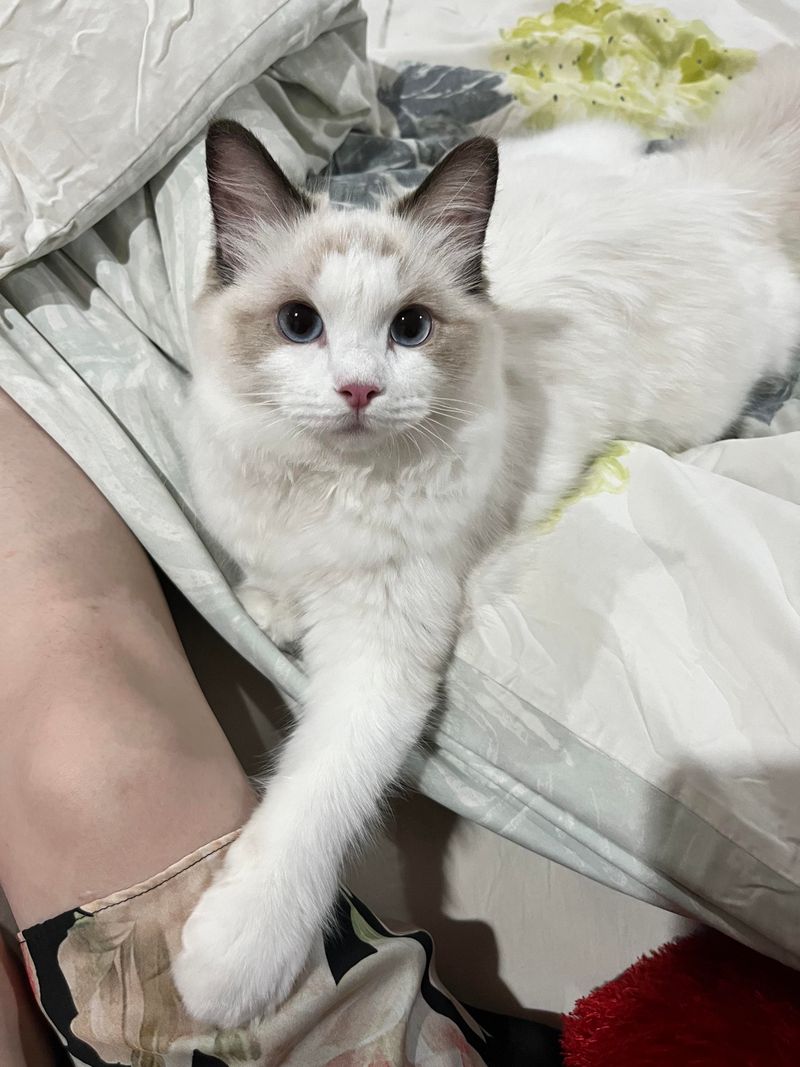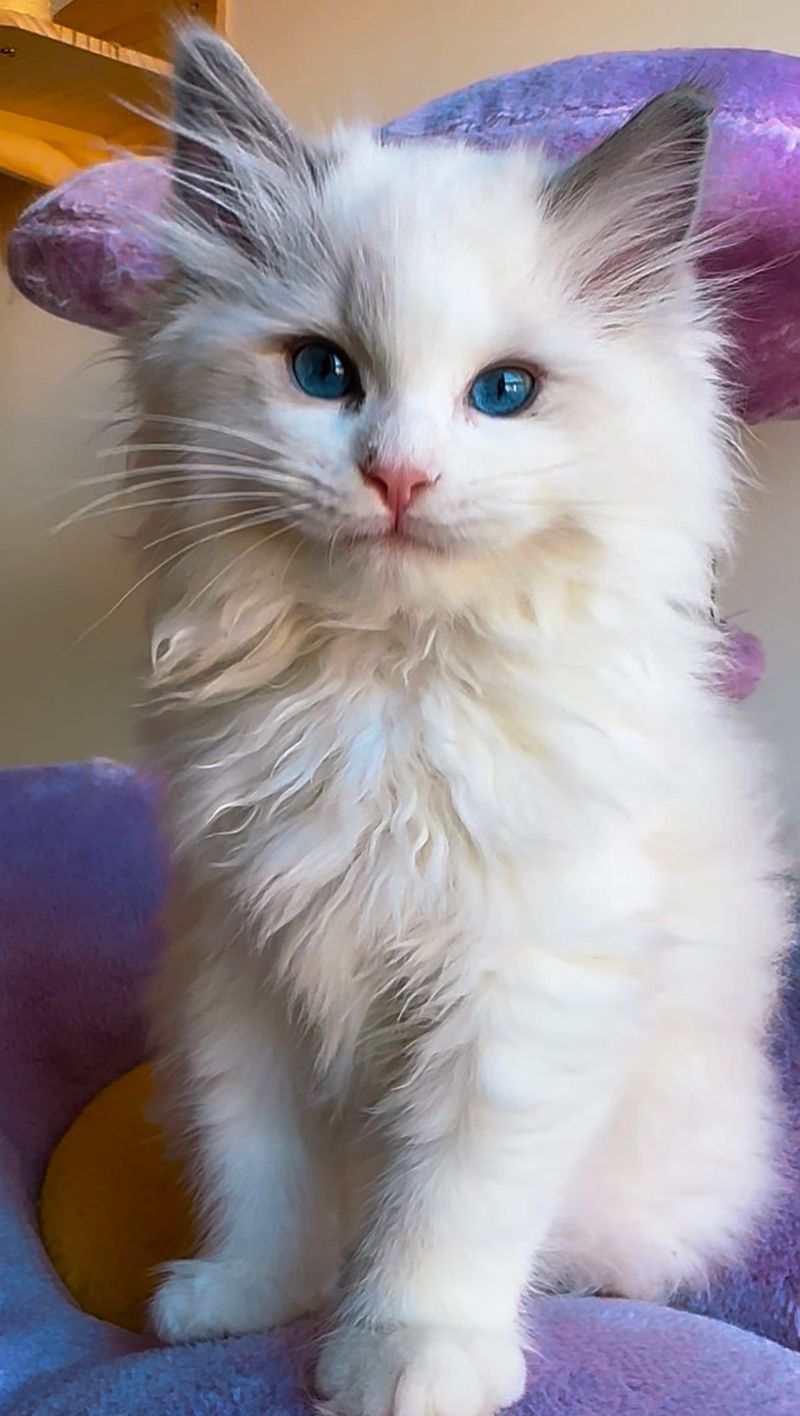📖 Table of Content:
- 1. Litter Box Troubles
- 2. Constant Attention Seeker
- 3. Lack of Self-Defense Instincts
- 4. Playtime That Turns Into Aggression
- 5. Grooming Gone Overboard
- 6. Extremely Fussy Eaters
- 7. Too Quiet or Timid
- 8. Separation Anxiety
- 9. Overbonding with One Person
- 10. Sitting in Unwanted Spots
- 11. Destructive Chewing
- 12. Uncomfortable with Change
- 13. Overly Dependent on Cuddles
- 14. Being Overly Submissive to Other Pets
- 15. Sudden Mood Swings
Ragdoll cats are known for their striking beauty, gentle nature, and affectionate personalities. With their large, expressive eyes and soft, luxurious coats, they quickly become the stars of any household. However, despite their calm demeanor, Ragdolls can sometimes present certain behavior challenges that require attention and understanding.
While these cats are typically loving and laid-back, they are not immune to quirks that can make pet ownership a bit more complicated. From sudden mood swings to peculiar grooming habits, Ragdolls may occasionally exhibit behaviors that can catch even the most seasoned cat owner off guard. Their need for attention, combined with their playful and sensitive nature, can sometimes lead to difficulties.
If you’re considering bringing a Ragdoll into your home or already share your space with one, it’s important to be aware of the potential behavior issues that may arise. With patience and the right approach, these challenges can be managed, allowing you to enjoy the beauty and companionship that Ragdolls offer. Let’s take a closer look at 15 common Ragdoll behavior problems and how to address them effectively.
1. Litter Box Troubles
Ragdolls are bred to be affectionate lap cats, relaxed and content to cuddle all day. But their laid-back nature can sometimes lead to a surprising behavior issue—using the litter box. Unlike other cats, Ragdolls may not always cover their waste, simply due to their lazy tendencies. While this might be unexpected for a typically tidy cat, it’s usually not a big deal.
To help, keep the litter box clean and ensure it’s the right size for your Ragdoll. Placing it in a quiet, private area will also make her more comfortable. With a bit of patience and proper training, your Ragdoll will learn to use the box as expected.
2. Constant Attention Seeker
For some Ragdoll owners, their cat’s clingy nature is a joy. Many love taking care of their affectionate pet, feeling proud of the bond they share. However, Ragdolls can be unexpectedly needy, especially in the mornings.
Unlike most cats, Ragdolls may demand attention at ungodly hours, waking you up by climbing on your bed or even your face. While this is a behavior unique to the breed, it’s not always welcome by everyone. While you can’t change their love for attention, tiring them out before bed might help get you some extra sleep!
3. Lack of Self-Defense Instincts
You might be thinking, “How could this be true for such amazing creatures? After all, they come from some of the toughest feline ancestors!” But despite their impressive lineage, Ragdolls aren’t exactly natural fighters. They were bred to be loving, laid-back companions, not warriors.
If you have other pets or an outdoor lifestyle, this can become a problem. Ragdolls aren’t equipped to defend themselves if they’re ever attacked. In fact, they might just flop down and surrender, much like they do when you pick them up. For this reason, Ragdolls should be kept indoors. Their sweet, docile nature makes them vulnerable in hostile environments. Unless you have a secure yard or live in a calm, safe area, a more independent breed might be a better fit.
4. Playtime That Turns Into Aggression
It may seem surprising to think of aggression as a Ragdoll behavior problem, given their calm nature. But the key issue is “play.” While Ragdolls aren’t aggressive by nature, they can get a bit feisty during playtime and might scratch or bite when excited.
This playful aggression can become a problem, especially if you have children trying to interact with them. If your Ragdoll doesn’t get enough playtime, she might get frustrated and act out, leaving you with scratches. To avoid this, it’s important to set play boundaries early on. Adding another cat for companionship can help burn off excess energy, and over time, they’ll learn to play nicely and respect each other’s limits.
5. Grooming Gone Overboard
Ragdolls are adored for their soft, fluffy coats, making them impossible to resist. While their long fur is beautiful, it requires regular care to stay healthy and shiny.
Excessive grooming can become a behavior issue, as your Ragdoll might lick or bite her fur more than necessary. This could indicate stress or an underlying health problem, and could lead to hairballs or vomiting. Regular brushing is key to keeping your Ragdoll comfortable. If grooming becomes difficult for you, consider visiting a groomer to help manage her coat and prevent excessive grooming.
6. Extremely Fussy Eaters
These cats can be surprisingly picky eaters, which is a common behavior issue for this breed. You might be thinking, “Every cat is picky!” And while that’s true for many felines, Ragdolls can be especially finicky when it comes to their food. Spoiling your cat might seem harmless, but it can lead to a spoiled pet who turns her nose up at her meals.
Unlike some cats that will eat anything, Ragdolls can be quite particular about their food. If your cat refuses the kibble you’ve bought her, it’s not unusual. They can be finicky eaters, and their diet needs to be carefully considered, especially since they’re prone to certain health conditions.
7. Too Quiet or Timid
The calm demeanor of Ragdolls can sometimes turn into quietness or timidity, which might seem cute but may actually point to stress or discomfort. To support your Ragdoll, offer a safe, comforting space and use gentle interaction to encourage confidence. Shyer Ragdolls may require more attention to help them feel truly secure.
Be patient and avoid forcing interaction. Instead, use toys or treats as gentle coaxing tools. Understanding their body language is essential—watch for signs of relaxation like purring or kneading. Over time, with love and patience, they often become more outgoing.
8. Separation Anxiety
The strong bond Ragdolls form with their owners can result in separation anxiety when left alone for long periods. This may manifest in behaviors like constant meowing, destruction, or refusal to eat. To ease this, help your Ragdoll get used to being alone with gradual alone-time sessions and offer them interactive toys and puzzle feeders for mental stimulation.
Consider a second pet for companionship. Return home with a calm demeanor to reinforce a sense of security. Training them to enjoy alone time, using rewards and positive reinforcement, can help them adjust. Over time, these strategies can reduce anxiety, making alone time less stressful.
9. Overbonding with One Person
Ragdolls often bond closely with one person, which might seem flattering but can cause issues within a household. This overbonding can lead to jealousy or distress if that person is unavailable. Encourage your Ragdoll to interact with other family members by sharing feeding duties and playtime. Rotate these responsibilities regularly to diversify their social interactions.
Introducing new people gradually and gently can also help. Harnessing their love for play, use toys to engage them with different people. This approach helps balance their affection across the household, ensuring a harmonious living environment for everyone involved.
10. Sitting in Unwanted Spots
One quirky behavior of Ragdolls is their tendency to sit in the most inconvenient places, often where they’re not welcome. This could be their way of seeking warmth or simply wanting attention. To help, provide comfy alternatives like heated beds or window perches. You can also gently encourage them to move by using treats or a soft hand.
Consistently redirecting them to acceptable spots helps. Understanding their preference for certain textures or locations can help you anticipate and prevent these behaviors. Patience and consistency are key in teaching them desired behaviors, ensuring your space remains functional and harmonious for both you and your Ragdoll.
11. Destructive Chewing
If your Ragdoll starts chewing destructively, it could be due to boredom or teething in kittens. Offering a variety of chew toys can help channel their chewing instincts in a positive direction. Playtime is also important to reduce boredom and provide mental stimulation. Make sure any plants in your home are safe, as Ragdolls may chew on them. To protect furniture and cords, use deterrent sprays like bitter liquids to discourage chewing.
Supervised outdoor time in a secure area can also help expend their energy. Identifying triggers for chewing and addressing them effectively can mitigate damage. Through consistent training and environmental enrichment, this behavior can be managed, safeguarding your belongings and their well-being.
12. Uncomfortable with Change
Environmental changes, such as moving or new additions to the family, can make Ragdolls feel uneasy, often resulting in hiding or lack of appetite. To reduce their stress, it’s important to maintain familiar routines and spaces during transitions. Slowly introduce any new changes and offer familiar comforts like toys and blankets. Using calming pheromone diffusers can also assist in easing their anxiety and promoting a sense of security.
Observe their behavior closely for signs of distress and provide reassurance. Gradual exposure to changes, paired with positive reinforcement, helps them adapt. Creating a stable environment is crucial for their comfort and confidence, fostering a peaceful coexistence.
13. Overly Dependent on Cuddles
The affectionate nature of Ragdolls often earns them the “puppy-like” label, always craving cuddles and attention. However, this desire can turn into an ongoing demand for attention. To avoid this, it’s important to set limits by scheduling cuddle sessions and playtime. Interactive toys can keep them engaged on their own. Foster their independence by allowing them to explore and interact with their environment. Rewarding them when they play independently can help encourage self-reliance.
The gradual reduction in immediate attention when they demand it helps balance their needs. Developing this independence ensures a happy, well-adjusted Ragdoll that enjoys both companionship and solo time.
14. Being Overly Submissive to Other Pets
Ragdolls are generally gentle and may be overly submissive to other pets, leading to stress or conflict. This behavior can be addressed by ensuring separate spaces for them to retreat to. Encourage confidence with interactive toys and praise when they stand their ground.
Training sessions focusing on commands and rewards can boost their assertiveness. Observing interactions with other pets helps identify stressors, allowing preemptive actions. Gradual socialization with various pets, under controlled circumstances, aids in building confidence. Empowering your Ragdoll through consistent support and training leads to more balanced and positive interactions.
15. Sudden Mood Swings
Sudden emotional changes are common in Ragdolls, as they can quickly move from calm to agitated. Key triggers often include loud sounds or unfamiliar people. To help manage these mood swings, establishing a predictable routine and a tranquil setting is beneficial. Creating a retreat space where they can unwind is essential during times of stress. A gentle approach to play and speaking softly can help redirect their attention. Monitoring their body language can give you a better understanding of their emotional state.
Consistent, reassuring interactions build trust and security. Over time, by addressing triggers and maintaining a calm household, mood swings can be minimized, ensuring a more comfortable environment for your Ragdoll.
